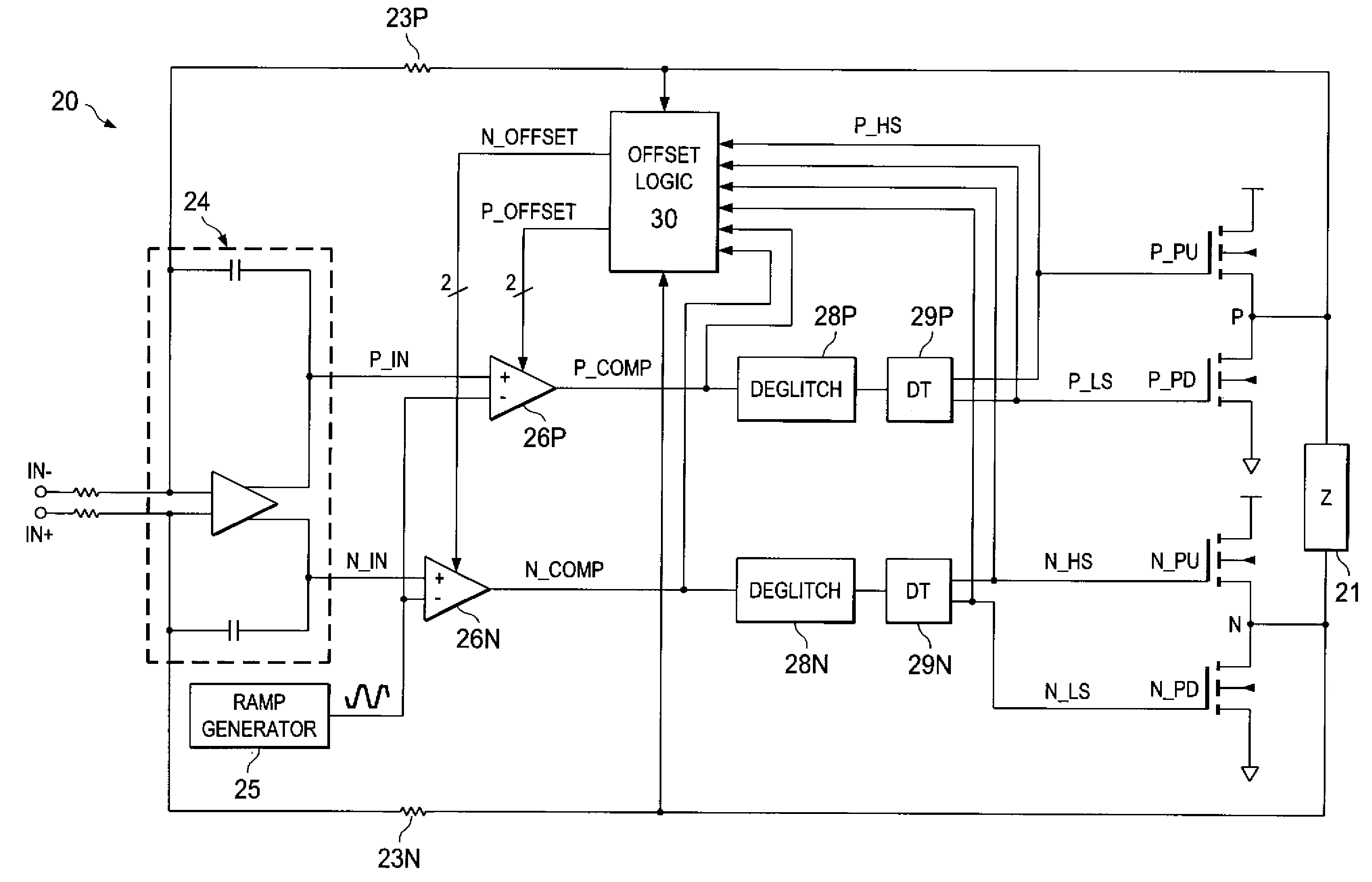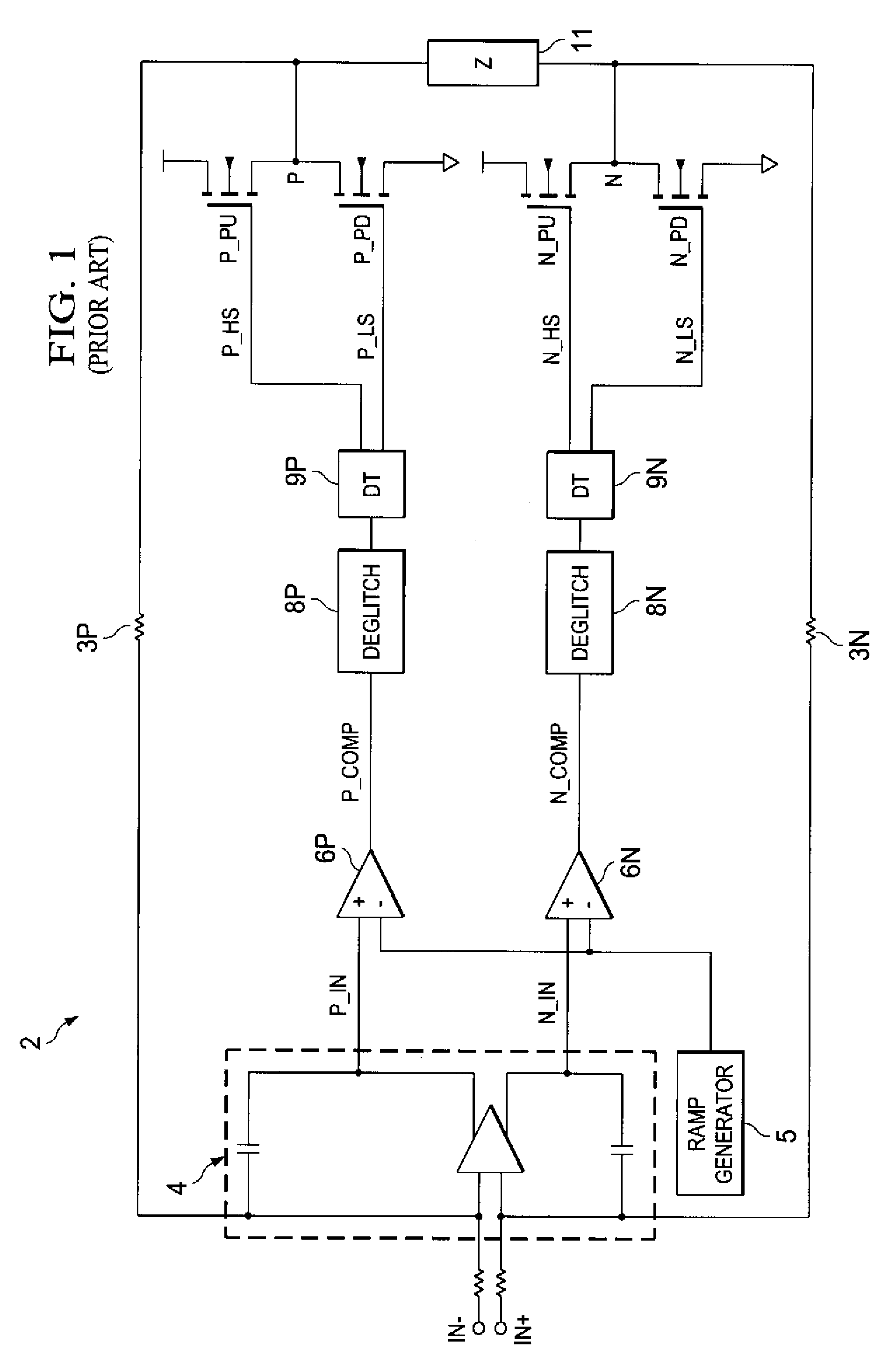Reduction of dead-time distortion in class d amplifiers
a class d, dead-time distortion technology, applied in amplifiers, amplifiers with semiconductor devices only, amplifiers, etc., can solve the problems of distortion caused in this conventional arrangement, and distortion of sinusoid from intended signal, etc., to achieve the effect of reducing harmonic distortion
- Summary
- Abstract
- Description
- Claims
- Application Information
AI Technical Summary
Benefits of technology
Problems solved by technology
Method used
Image
Examples
Embodiment Construction
[0038]The present invention will be described in connection with certain embodiments, namely as implemented into a digital audio amplifier. However, it is contemplated that this invention can also provide important benefits if applied in connection with other circuit and system applications for class D amplifiers. Accordingly, it is to be understood that the following description is provided by way of example only, and is not intended to limit the true scope of this invention as claimed.
[0039]Referring now to FIG. 4, the construction of an example of amplifier 20 according to embodiments of the invention will now be described. Amplifier 20 in this example corresponds to a digital audio amplifier driving a loudspeaker or other device producing audible output. It is contemplated that amplifier 20 of FIG. 4 will typically be implemented as the output stage for a channel of a larger-scale digital audio system, such as a digital audio or audio / visual receiver, audio output circuitry for ...
PUM
 Login to View More
Login to View More Abstract
Description
Claims
Application Information
 Login to View More
Login to View More - R&D
- Intellectual Property
- Life Sciences
- Materials
- Tech Scout
- Unparalleled Data Quality
- Higher Quality Content
- 60% Fewer Hallucinations
Browse by: Latest US Patents, China's latest patents, Technical Efficacy Thesaurus, Application Domain, Technology Topic, Popular Technical Reports.
© 2025 PatSnap. All rights reserved.Legal|Privacy policy|Modern Slavery Act Transparency Statement|Sitemap|About US| Contact US: help@patsnap.com



